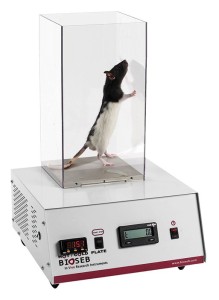Authors
S. Pitake, J. DeBrecht, S.K. Mishra
Lab
College of Veterinary Medicine, North Carolina State University, Raleigh, NC
Journal
Molecular Pain
Abstract
Background: We recently demonstrated that brain natriuretic peptide is expressed in the dorsal root ganglia, and that brain natriuretic peptide is required for normal detection of pruritogens. We further showed that the receptor for brain natriuretic peptide, natriuretic peptide receptor A, is present in the spinal cord, and elimination of these neurons profoundly attenuates scratching to itch-inducing compounds. However, the potential modulatory roles of brain natriuretic peptide in nociception, inflammation, and neuropathic mechanisms underlying the sensation of pain have not been investigated in detail. Findings: To demonstrate the involvement of brain natriuretic peptide in pain, we compared the behavioral responses of brain natriuretic peptide knockout mice with their wild-type littermates. First, we showed that brain natriuretic peptide is not required in chemically induced pain responses evoked by the administration of capsaicin, allyl isothiocyanate, adenosine 50-triphosphate, or inflammatory soup. We further measured pain behaviors and found no involvement of brain natriuretic peptide in hot, cold, or mechanical nociceptive responses in mice, nor did we find evidence for the involvement of brain natriuretic peptide in neuroinflammatory sensitization elicited by complete Freunds adjuvant or in neuropathic pain.
Conclusions: These results demonstrate that brain natriuretic peptide is not essential for pain-related behaviors.
BIOSEB Instruments Used
Cold Hot Plate Test (BIO-CHP)
Source :
http://journals.sagepub.com/doi/pdf/10.1177/1744806917736993

 Douleur - Allodynie/Hyperalgésie Thermique
Douleur - Allodynie/Hyperalgésie Thermique Douleur - Spontanée - Déficit de Posture
Douleur - Spontanée - Déficit de Posture Douleur - Allodynie/Hyperalgésie Mécanique
Douleur - Allodynie/Hyperalgésie Mécanique Apprentissage/Mémoire - Attention - Addiction
Apprentissage/Mémoire - Attention - Addiction Physiologie & Recherche Respiratoire
Physiologie & Recherche Respiratoire




































 Douleur
Douleur Système Nerveux Central (SNC)
Système Nerveux Central (SNC)  Neurodégénérescence
Neurodégénérescence Système sensoriel
Système sensoriel Système moteur
Système moteur Troubles de l'humeur
Troubles de l'humeur Autres pathologies
Autres pathologies Système musculaire
Système musculaire Articulations
Articulations Métabolisme
Métabolisme Thématiques transversales
Thématiques transversales Congrès & Meetings
Congrès & Meetings 